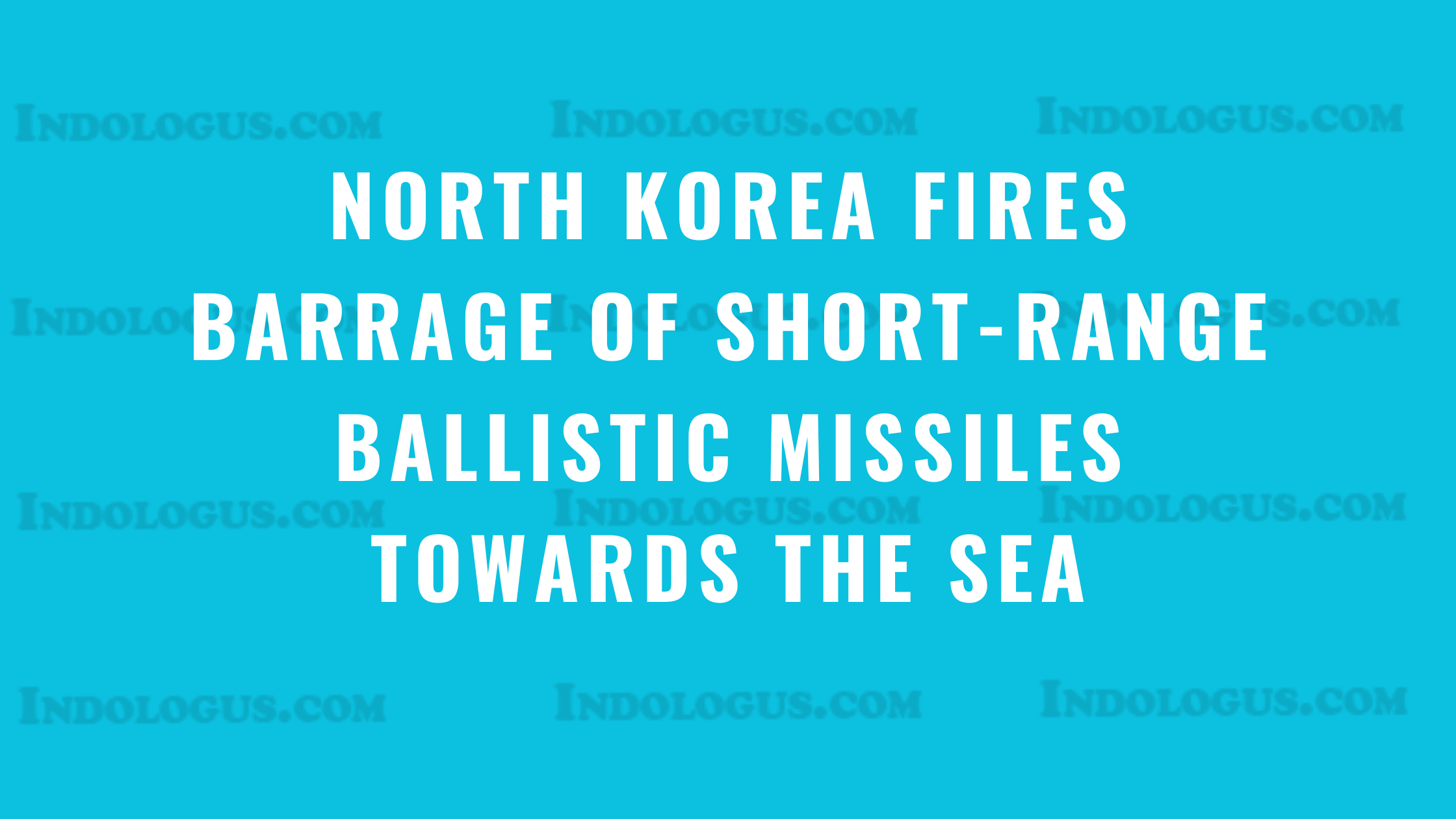Tensions Escalate as North Korea Launches Multiple Missiles Amid Heightened Military Readiness
Introduction: North Korea’s Latest Ballistic Missile Launch
North Korea has launched a series of short-range ballistic missiles towards the Sea of Japan (East Sea), marking the latest in a string of provocative military actions. South Korea’s Joint Chiefs of Staff (JCS) reported that several missiles were fired early on Tuesday morning, signaling the regime’s continued show of military strength.
Details of the Ballistic Missile Launch
South Korea’s JCS confirmed that multiple short-range missiles were launched from the Sariwon region, located south of Pyongyang. The missiles reportedly flew an estimated distance of 400 kilometers (about 248 miles) before splashing down in the sea. The launch took place at approximately 07:30 AM local time on Tuesday, sending shockwaves through the region.
Initially, the JCS had reported the launch of a single missile, but it was later clarified that several ballistic missiles were involved in the operation. The South Korean military, along with their US and Japanese counterparts, have been closely monitoring North Korea’s missile activity, with data sharing conducted to ensure regional security.
Regional Reactions and International Concerns
The Japanese government also confirmed the missile launch, with Japan’s coast guard reporting that the projectiles had landed outside the country’s exclusive economic zone (EEZ). South Korea has remained on high alert, continuously evaluating North Korea’s missile capabilities.
South Korean Minister of National Defense, Kim Yong-hyun, had earlier warned that North Korea might escalate military displays in the lead-up to the upcoming US presidential election. Such actions are often seen as an attempt by North Korea to gain Washington’s attention and exert pressure on the global stage.
North Korea’s Ongoing Missile Development
This latest missile test follows North Korea’s successful launch of a new solid-fuel intercontinental ballistic missile (ICBM) just days earlier on October 31. North Korea’s state-run media hailed the launch of the Hwasong-19 ICBM as a significant achievement, calling it “the world’s strongest ICBM.”
Moreover, South Korea’s military intelligence agency has raised concerns that North Korea is preparing for a seventh nuclear test, which could further heighten tensions on the Korean Peninsula and beyond.
Growing Tensions Between North and South Korea
Tensions between North Korea and South Korea have reached unprecedented levels in recent years. North Korean leader Kim Jong Un has continually expanded his country’s ballistic missile arsenal while also reportedly sending weapons and troops to assist Russia in its war against Ukraine.
While North Korea denies sending troops to fight in Ukraine, there have been growing concerns that Pyongyang is increasing its military cooperation with Moscow. South Korea and the European Union have expressed “deep concern” over the potential transfer of nuclear or missile technology from Russia to North Korea in exchange for military support in Ukraine. Such transfers, they warn, would undermine international non-proliferation efforts and destabilize global peace.
North Korea’s Justification for Its Military Actions
In a statement, Kim Yo Jong, the influential sister of North Korean leader Kim Jong Un, condemned recent joint military drills conducted by the US, South Korea, and Japan. She argued that these exercises posed a direct threat to North Korea’s security and justified Pyongyang’s continued nuclear development.
On Sunday, the US, South Korea, and Japan carried out a joint air exercise, which included the deployment of a US B-1B bomber and South Korean and Japanese fighter jets. North Korea has long viewed such drills as rehearsals for an invasion of its territory, further fueling the already tense relations on the peninsula.
Conclusion: The Path Ahead
As North Korea continues to showcase its missile capabilities, the international community remains on edge, with heightened concerns about the potential for further escalation. With both North and South Korea ramping up military readiness and global powers like the US and Japan closely monitoring the situation, the future of peace and stability in the region remains uncertain.
The continued development of North Korea’s ballistic missile technology, combined with the prospect of nuclear tests and military cooperation with Russia, presents a complex challenge for the international community. Efforts to de-escalate tensions will be critical in preventing a larger crisis on the Korean Peninsula and beyond.




